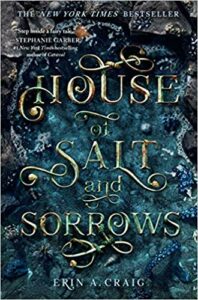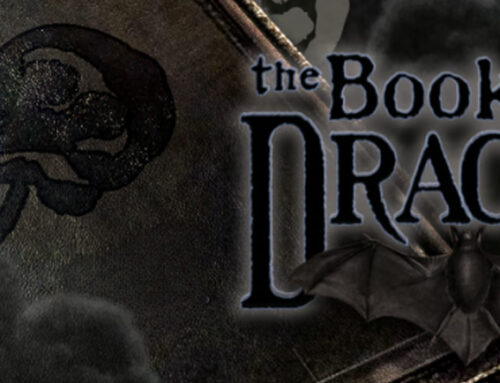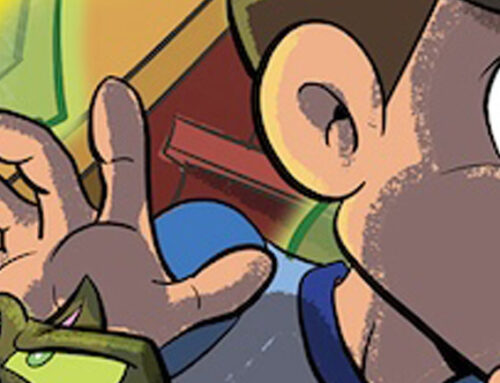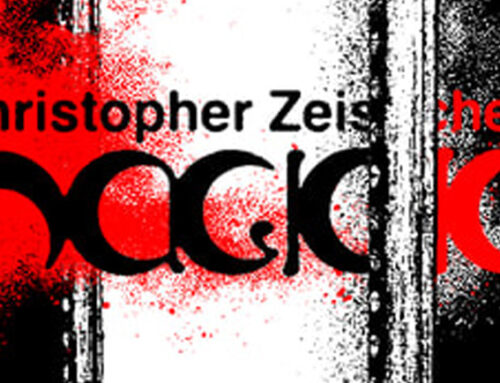Annaleigh lives a sheltered life at Highmoor with her sisters and their father and stepmother. Once there were twelve, but loneliness fills the grand halls now that four of the girls’ lives have been cut short. Disturbed by a series of ghostly visions, Annaleigh becomes increasingly suspicious that her sister’s deaths were no accidents. The girls have been sneaking out every night to attend glittering balls, dancing until dawn in silk gowns and shimmering slippers, and Annaleigh isn’t sure whether to try to stop them or to join their forbidden trysts. Because who–or what–are they really dancing with?
House of Salt and Sorrows  (Erin A. Craig) is a difficult title to review based simply on the fact that I am far outside of the novel’s intended audience– I’m neither a teen nor someone with any particular interest in the tropes which comprise that genre. As such, my opinion has to come from that of a horror reader exclusively, and the problem with that perspective is that so, so much of the novel is spent appealing specifically to teens. If young adult literature is to your tastes your mileage will certainly vary, but I found that House of Salt and Sorrows spent far too much time focusing on less important story elements than the central plot.
(Erin A. Craig) is a difficult title to review based simply on the fact that I am far outside of the novel’s intended audience– I’m neither a teen nor someone with any particular interest in the tropes which comprise that genre. As such, my opinion has to come from that of a horror reader exclusively, and the problem with that perspective is that so, so much of the novel is spent appealing specifically to teens. If young adult literature is to your tastes your mileage will certainly vary, but I found that House of Salt and Sorrows spent far too much time focusing on less important story elements than the central plot.
The first quarter of the book is what really bogs House of Salt and Sorrows down. We’re introduced to Annaleigh at her older sister’s funeral, which is full of intriguing pieces of world-building– everything nautical oriented in the novel really shines and gives the book a strong sense of place. However, we’re immediately tossed back into the life of a wealthy family who have almost unanimously decided to forego their yearlong mourning period and in doing so require new wardrobes for a ball. The next hundred or so pages are mostly concerned with clothes, dancing, and boys (or a lack thereof), and though the protagonist outwardly rejects the frivolity of her sisters while attempting to determine the true cause of the deaths in her family, she too is very concerned with…clothes, dancing, and boys. There are a few cool set pieces in the early chapters which feel very inspired by The Conjuring series and similar hauntings, but for the most part, our characters and their interactions were just a bit too shallow to grab me.
Again, I imagine a significant percentage of people will enjoy the sections of House of Salt and Sorrows which are concerned with court life, extravagant balls, and royal festivals, but I found that too much of the novel was intentionally spent looking away from the more promising elements of the story. Specifically, the world-building is put on a backburner to spotlight a lukewarm romance plot. The author offers glimpses into the religious practices of the setting without ever giving the audience enough information about the (very real) gods for the payoff to land the way it should, and the lore we’re missing is such a large part of the novel’s climax that any attempt at explanation feels too rushed.
*SPOILERS AHEAD!* While the ultimate culprit in the deaths surrounding the Thaumas family is well developed, the “how” is what left me scratching my head. Prior to this point in the novel, we’ve heard characters refer to the different gods and their dominions, but they’ve been mostly a far off concept. What is a harbinger in this context? What is a trickster? What do their powers entail, as they clearly have rules and are a part of the broader religious lore? Why are we learning these things at the very end of the book? This was perhaps the most conflicting part of House of Salt and Sorrows because the antagonists revealed at the end are easily my favorite part of the entire novel, but their introduction is deeply contrived and we get to see so little of them. The last quarter of the book is so promising and flashy that I almost feel the novel is worth it for that section alone, and I’d love to see the author tackle pure horror rather than mystery so that these sorts of elements can take center stage, but as is I’m not sure I can recommend this one to anyone who isn’t already a dedicated young adult reader. As a final note, I do wish the epilogue didn’t immediately reverse the most impactful part of the novel’s ending– it felt like a bit of a cop-out.
House of Salt and Sorrows is available now in both physical and digital editions







